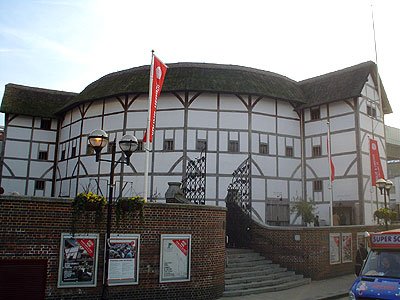Welcome to Southwark
 The London Borough of Southwark is located south of the River Thames and approximately 1.5 miles directly south of the city. It comprises the towns of Southwark, Peckham, Camberwell, Dulwich, Rotherhithe.
The London Borough of Southwark is located south of the River Thames and approximately 1.5 miles directly south of the city. It comprises the towns of Southwark, Peckham, Camberwell, Dulwich, Rotherhithe.
The Borough covers an area of approximately 28.85 sq.km.
Southwark was the home of London's first theatres in the 16th century, where Shakespeare's plays were first performed. Today's Globe Theatre, close to the site of the original, stages plays outdoors during the summer. Among the borough's impressive buildings are Southwark Cathedral, dating from the 13th and 14th centuries, the Tate Modern, housed in the Bankside Power Station to display modern works of art, and City Hall, headquarters of the Greater London Authority. At St Mary Overie's Dock in Bankside can be seen Golden Hind, a 16th century ship captained by Sir Francis Drake, and on the Thames is HMS Belfast, an Edinburgh class light cruiser of the Royal Navy. Bermondsey Antiques Market and Borough Market, for food, are popular attractions.
Southwark's history dates from the 9th century, although excavations have revealed that there was prehistoric activity here. Originally the area was marshy with a series of islands in the Thames. It was the best place to bridge the river, and the two Roman roads - Watling Street and Stane Street - met here. It was the rebuilding of the bridge at the end of the 9th century that re-established Southwark. A market was established here in the 13th century and the area was famous for its inns, especially The Tabard, from where the pilgrim's set out in Chaucer's Canterbury Tales. In 1550 Southwark was incorporated into the City of London as 'The Ward of Bridge Without'. The area became the entertainment district for London and in 1599 Shakespeare's Globe Theatre was built on Bankside. This burnt down in 1613 but a modern replica now stands near the original site. Bull and bear baiting were also popular entertainments of the time. The Great Fire of Southwark in 1861 destroyed a large number of buildings from Tooley Street to the Thames. In 1890 the first deep level London 'tube' underground line opened here; it was known as 'The City and Southwark Railway', now part of the Northern Line.
The service industry is the largest sector of the local economy, employing around 80% of all workers.
The name Southwark comes from the Old English 'suth' and 'weorc' meaning 'southern defensive work or fort'. In the Domesday Book of 1086 it was known as Sudwerca.







